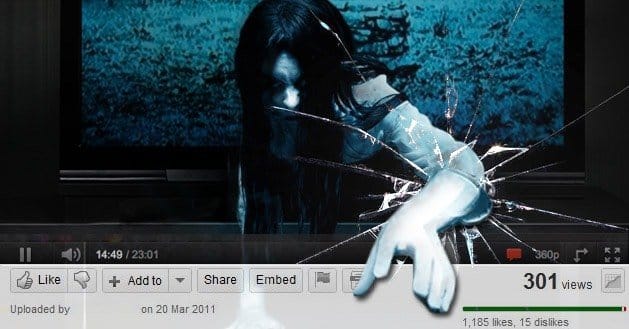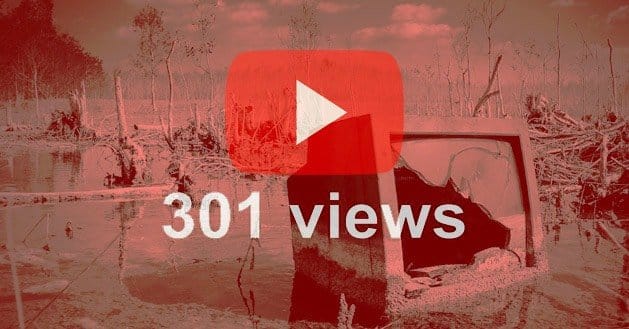 Written by ContentPowered.com
Written by ContentPowered.comYouTube is an incredibly popular site for uploading and sharing videos. From funny personal videos to business promotion videos, there is a wide range of video types promoted on YouTube. Some channels are also monetized so that the amount of views a channel or video gets is related to how much money that business owner or person makes. Because of this, views are incredibly important to a large number of people, and not just having views, but having verifiable and valid view counts.
So you’re probably excited when you see your view count rising steadily higher and higher, until suddenly something strange happens. Around 301 views, the view count will freeze. This in and of itself might not seem like a big deal at first – maybe it’s just a slow week – but the mystery deepens when you notice that your analytics account is recording thousands or hundreds of views, and you have more “likes” or “thumbs up” than you do views. What is going on? Why does this happen?
Fortunately, this is not a mystery; unfortunately, it can be slightly frustrating when you want to see that view count rise. But understanding why it freezes at 301 (or somewhere around there) can help you come to peace with your frozen view counts, and help you feel at ease that it won’t stay there forever.
The Basics
If you want the basic explanation only, here it is. Essentially, YouTube wants to make sure that videos and channels that have a very high level of views are actually obtaining valid views. There are some ways that clever techies can essentially trick the counter into thinking there are more views, and of course, someone can watch their own video over and over to try to raise it if they aren’t logged in. Since validity and security is a priority at YouTube, they set up a system that freezes counts at 301 until the validity of those views can be verified.
People can still watch your video, so reset assured nobody is missing out on the awesome content you’re displaying, but the official YouTube count will rest at 301 or so until they can go through and verify that all those views are official. Once they put your video through the review process, you’ll see a dramatic jump in official views if you have far more than 301.
The short answer, then, is that it is merely a security protocol, it’s done on purpose, there’s nothing wrong with your site or channel, and as long as those views have come in organically and are valid, you shouldn’t have a problem. After a relatively short period of time, your views will proceed to greatness.
The Technical Answer
YouTube is relatively secretive about how they calculate an actual view, but the most common response is that if someone makes a legitimate request for a video and sees the video and has a positive user experience, that’s a view. It’s rather broad as definitions go, but it’s what they describe a view as.
Counterfeit views are a problem that YouTube wants to counter, so part of the reason they freeze views at 301 is to make sure that no counterfeit views are being recorded. Computers have many systems and algorithms to make sure that this isn’t happening, and in a day or so your views will rise after they have been counted and verified.
However, the other reason that views are halted is because of input. Not everyone watches a certain YouTube video from the same server, since videos are viewed worldwide. In order to slow down the delay time between requesting the video and viewing it, videos are cached in different places. In other words, your video might be cached in the UK, the United States, Africa and Australia, so that when someone in Ireland watches a video uploaded in California, they don’t have to wait for the video to be requested and transmitted to another country.
Everywhere that videos are cached has a log. So, for instance, let’s say your video is requested from central Europe. The viewer’s computer sends a request to the server where the video is cached (to YouTube, essentially), and the video is returned. When the video is returned, a little message is put into a log. It’s a one-line message that basically just lets YouTube know that this video was requested. Every once in awhile, YouTube collects these logs and downloads them so the computers can tally views.
Not only is that a lot of information to verify, but the computers are looking for more than just a count of the views. A statistical verification process is gone through to ensure the quality of a video. For instance, if you have a video with a very misleading title and the video has nothing to do with the title, viewers will likely press play, watch for a few seconds, and leave the video. If the computer sees that this is happening a significant number of times, it’s a good indicator that video is not quality, and YouTube can look into it.
The Final Say
When it comes down to it, your views are a currency, and when views are coming in one by one and you have a fairly low amount – under 300 – the validity of the views don’t have to be worried about too much. But once you start going over 300 and the video begins to receive a lot of views, YouTube wants to make sure that those views are valid, nothing is being tampered with, and that your view is providing value to your audience. Usually it only takes a day or so to verify the views, and then your count will go up. YouTube may repeat this process if you start getting a really high volume of views, as well, again to ensure quality and security. So now you know why your views are stuck; hold tight and your counts will reflect accurately soon.


